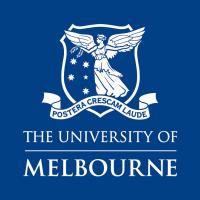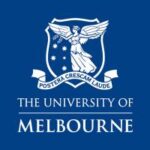
The University of Melbourne is a public research university located in Melbourne, Australia. Founded in 1853, it is Australia’s second oldest university and the oldest in Victoria. Its main campus is located in Parkville, an inner suburb north of the Melbourne central business district, with several other campuses located across Victoria.
Melbourne is a sandstone university and a member of the Group of Eight. Since 1872 various residential colleges have become affiliated with the university. There are 10 colleges located on the main campus and in nearby suburbs offering academic, sporting and cultural programs alongside accommodation for Melbourne students and faculty.
Melbourne comprises 10 separate academic units and is associated with numerous institutes and research centers, including the Walter and Eliza Hall Institute of Medical Research, Florey Institute of Neuroscience and Mental Health, the Melbourne Institute of Applied Economic and Social Research and the Grattan Institute. Amongst Melbourne’s 15 graduate schools the Melbourne Business School, the Melbourne Law School, and the Melbourne Medical School are particularly well regarded.
The University of Melbourne has a rich and fascinating past spanning 160 years.
Every building, every department and every period of time has its own story. While some of these stories have been recounted many times over, a great number remain to be written.
Beginning as a cluster of buildings set in a large park on the fringe of the city, with four professors and 16 students, the University now sits at the heart of a thriving international city.
Today over 8000 academic and professional staff support a vibrant student body of more than 48 000, including more than 13 000 international students from over 130 countries around the world.
The University followed the ideals of mid-nineteenth century universities of secular education, and with an emphasis on modern languages and literature, mathematics and natural science alongside classics and ancient history.
From these foundations the University developed, not always smoothly, into new areas, offering Law from 1857, Engineering and Medicine from 1852. The University admitted women in 1881, and Julia ‘Bella’ Guerin became the first woman to graduate from an Australian university (BA, 1883). Early debates about the proper role of the university learning and the degree to which it should be shielded from commercial and practical issues gave way slowly to a university that by World War Two saw itself as integral to the nation-building through its capacity for research in the social, natural and medical sciences. The University also awarded the first Australian Ph.D. in 1947.
During this period, the body of students expanded from an initial 16 students to 2,000 by the end of World War I, to 6,000 by the end of World War II, and with the increasing weight of numbers brought an increasing influence over public debates, exploring public questions and hosting critical political and social debates. The Australian academic community has been enriched in the past fifty years with the addition of new universities, an international community of students, and increasing partnerships with and engagement with the wider local, national and internal communities.

*AAF = Average Annual Fees
*AAC = Average Annual Cost
*UG = Undergraduate
*PG = Post Graduate
Established in 2007, Lekkside Education Consult is one of the most successful international student recruitment company in Nigeria today. We have helped thousands of students every year to pursue higher education overseas.
2014 – 2024 © Lekkside Education Consult. All rights reserved.